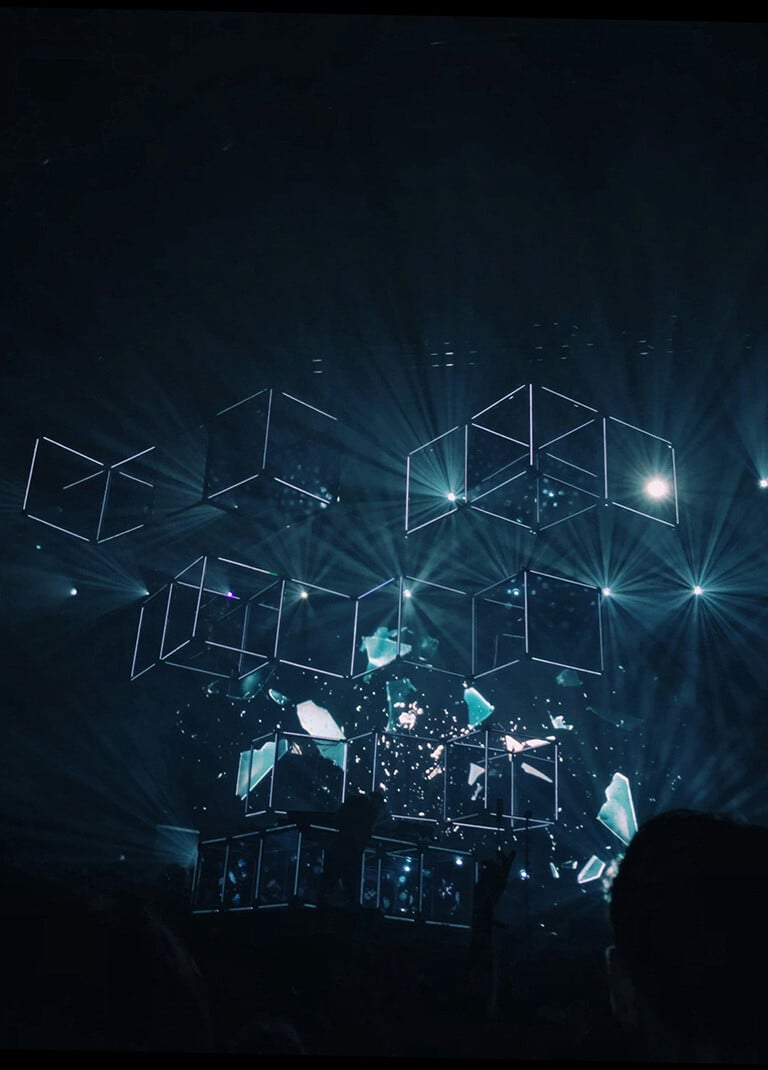In an age where sustainability and corporate responsibility have become increasingly important, the IT industry is stepping up to minimize its environmental footprint.
Data centers, the backbone of the digital world, are leading the way with "green data center certification" that not only benefits IT infrastructure and operations, but the planet as well.
“Many have come to understand the benefits of a green data center, not just for the environment but also for enterprise sustainability,” writes Casey Moore, Energy and Sustainability Manager at Sabey Data Centers in Data Center Frontier. “Sustainability is no longer a luxury for enterprises that operate in a competitive landscape – it is a necessity.”
Defining Green Data Centers and Fundamental Principles
Green data centers are designed and operated with a focus on reducing environmental impact and improving energy efficiency.
The fundamental principles of green data centers include:
- Energy Efficiency: Maximizing the use of energy-efficient technologies.
- Sustainable Design: Incorporating eco-friendly materials and practices in construction.
- Optimized Cooling: Implementing efficient cooling systems to reduce energy consumption.
- Renewable Energy: Increasing the use of renewable energy sources.
- Waste Reduction: Minimizing waste generation and recycling e-waste.
- Resource Management and Monitoring: Efficiently managing resources like water, power, and space while continuously monitoring energy and environmental performance.
- Regulatory Compliance: Adhering to local and international regulations and standards governing environmental impact and sustainability practices.
The Importance of Sustainability and the Environmental Impact of Data Centers
Sustainability is no longer a buzzword but a global imperative. Environmental issues, such as climate change, pollution, and resource depletion, are driving the growing importance of sustainability in all industries, including IT.
Green data centers play a pivotal role in mitigating the industry's impact on the environment because data centers, while essential for our digital age, have a substantial environmental footprint, which includes the following key aspects:
- High Energy Consumption: Data centers are voracious energy consumers. IT equipment, such as servers, storage systems, and networking gear, demands a constant and massive supply of electricity to run 24/7. This high energy consumption not only contributes to rising operational costs but also places significant strain on the power grid, which often relies on fossil fuels, leading to a higher carbon footprint.
- Carbon Footprint: The energy-intensive nature of data centers results in a significant carbon footprint. The electricity used by data centers primarily comes from fossil fuels, like coal and natural gas. This reliance on non-renewable energy sources leads to the release of substantial greenhouse gas emissions, primarily carbon dioxide (CO2), which contributes to global warming and climate change. Reducing this carbon footprint is crucial to achieving sustainability goals and combatting the effects of climate change.
- Water Usage: Cooling systems within data centers are essential to maintaining the optimal operating temperature for the IT infrastructure. These cooling systems often require substantial amounts of water. Data centers located in regions with limited water resources can put a strain on local water supplies. Additionally, the treatment and disposal of water can have environmental consequences, making it important for data centers to adopt water-efficient cooling technologies and practices.
- Electronic Waste (E-Waste): The rapid pace of technological advancement leads to frequent equipment upgrades within data centers. This constant cycle of hardware refreshment results in a substantial generation of electronic waste or e-waste. This waste poses both environmental and health risks when not properly managed. Disposing of obsolete IT equipment in landfills or through improper recycling methods can contaminate the environment with hazardous materials. It's essential for data centers to responsibly manage their e-waste by recycling, refurbishing, or donating older equipment, reducing the environmental impact of disposal and conserving resources.
Understanding the environmental impacts of data centers is the first step towards making them more sustainable and reducing their carbon footprint.
Key Metrics for Green Data Centers
Understanding key metrics, which can be a language of its own, is essential for evaluating green data centers:
- Power Usage Effectiveness (PUE): PUE is a critical metric that evaluates the efficiency of a data center's energy use. It is calculated by dividing the total facility energy consumption (including cooling, lighting, and auxiliary systems) by the energy consumed by the IT equipment. A lower PUE indicates better energy efficiency, as it signifies that a larger proportion of the energy is going towards running the IT equipment rather than powering the supporting infrastructure.
- Carbon Usage Effectiveness (CUE): CUE measures the carbon footprint of a data center by assessing the amount of carbon dioxide (CO2) emissions produced for each unit of energy used by the IT equipment. A lower CUE signifies a more environmentally friendly data center, as it indicates reduced carbon emissions in relation to energy consumption.
- Water Usage Effectiveness (WUE): WUE is crucial for evaluating a data center's water efficiency, especially for cooling systems. It quantifies the amount of water used for cooling relative to the energy consumed by the IT equipment. A lower WUE indicates that less water is being used to maintain the data center's optimal temperature, which is particularly important in regions with water scarcity concerns.
- IT Load Capacity: IT load capacity measures how effectively the data center's IT equipment is utilized. It's the ratio of the actual IT load (the servers, storage, and networking equipment in use) to the total IT load capacity. Maximizing IT load capacity ensures efficient resource allocation and minimizes energy wastage associated with underutilized equipment.
- Server Utilization Rate: Server utilization rate reflects the efficiency of server usage within a data center. It measures the percentage of a server's capacity that is actively being used for computing tasks. A higher server utilization rate indicates a more efficient use of resources and reduced energy waste.
- Waste Diversion Rate: The waste diversion rate measures the percentage of waste generated within the data center that is diverted from landfills through recycling, reuse, or responsible disposal methods. A higher waste diversion rate signifies a commitment to sustainability and minimizes the environmental impact of e-waste.
- Renewable Energy Usage: This metric assesses the proportion of energy consumed within the data center that is sourced from renewable energy, such as solar, wind, or hydropower. A higher percentage of renewable energy usage indicates a reduced carbon footprint and a commitment to sustainable energy sources.
- Cooling Efficiency: Cooling efficiency evaluates how effectively cooling systems maintain the data center's temperature. Efficient cooling reduces energy consumption and minimizes the environmental impact. Metrics like Computer Room Air Conditioning (CRAC) unit efficiency and Chilled Water System Efficiency are used to assess cooling efficiency.
- Data Center Infrastructure Efficiency (DCiE): DCiE measures the energy efficiency of a data center by calculating the proportion of energy delivered to IT equipment compared to the total energy input to the data center. A higher DCiE indicates better energy efficiency, as more energy is being used to power the IT infrastructure.
- Virtualization Ratio: Virtualization is a technology that allows multiple virtual servers to run on a single physical server. The virtualization ratio evaluates the level of server consolidation within the data center. A higher virtualization ratio represents more efficient resource utilization and reduced energy consumption.
- Data Center Productivity (DCP): DCP is a metric that assesses the overall efficiency of the data center in delivering business value. It considers factors like energy efficiency, resource utilization, and IT performance to measure how well the data center supports the organization's goals.
Understanding and monitoring these key metrics is essential for assessing the sustainability and efficiency of a data center. Data center operators can use this data to make informed decisions and implement improvements that reduce their environmental impact and energy consumption while optimizing resource utilization.
Well-Known Green Data Center Certifications and Standards
By pursuing well-known green data center certifications and standards, data centers can demonstrate their commitment to sustainability, energy efficiency, and environmentally responsible practices.
These certifications and standards provide a structured framework for data center operators to follow while working toward a more sustainable future:
- Leadership in Energy and Environmental Design (LEED) Certification: LEED is a globally recognized green building certification program. While not specific to data centers, it evaluates and certifies the overall environmental performance and sustainability of buildings. Data centers can earn LEED certification by implementing energy-efficient practices, sustainable design, and resource conservation in their construction and operations.
- ISO 50001: Energy Management Systems: ISO 50001 is an international standard that provides a systematic approach to improving energy performance and increasing energy efficiency. This standard helps data centers establish and maintain energy management systems to reduce energy consumption, minimize carbon emissions, and promote sustainability.
- ENERGY STAR Certification for Data Centers: The ENERGY STAR program, managed by the U.S. Environmental Protection Agency (EPA), provides certification for energy-efficient products, including data center equipment. Earning the ENERGY STAR certification demonstrates a data center's commitment to reducing energy consumption and environmental impact.
- Green Grid Data Center Maturity Model (DCMM): The Green Grid DCMM is a framework that assesses the maturity and efficiency of data center operations. It helps data centers identify areas for improvement and provides guidance on implementing best practices to increase energy efficiency and sustainability.
- US Department of Energy (DOE) Data Center Energy Efficiency Program (DCeP): The DOE's DCeP is a comprehensive program that offers data center operators tools and resources to assess and improve energy efficiency. The program includes training and certification options for data center professionals to enhance their understanding of energy management best practices.
- Electronic Product Environmental Assessment Tool (EPEAT) Certification: EPEAT is a global rating system for evaluating the environmental performance of electronic products, including servers and other data center equipment. EPEAT certification provides data centers with a clear indicator of a product's environmental attributes and sustainability.
- Building Research Establishment Environmental Assessment Method (BREEAM) Certification: BREEAM is a widely recognized certification for assessing the environmental performance of buildings, including data centers. It covers various aspects, including energy efficiency, resource management, and ecological impact, and provides a rating system for sustainable building design and operation.
- EU Code of Conduct for Data Centers: This European initiative encourages data centers to improve their energy efficiency and environmental performance. The code of conduct offers best practices, guidelines, and benchmarks for data centers to follow in their efforts to reduce energy consumption and greenhouse gas emissions.
- EN 50600: European-wide Transnational Standard: EN 50600 is a European standard developed to provide consistent and comprehensive guidelines for data center design and operation. It covers various aspects, including energy efficiency, security, and sustainability, to help data centers meet international and regional standards.
- TIA-942: Telecommunications Infrastructure Standard for Data Centers: TIA-942 is a telecommunications infrastructure standard specifically developed for data centers. It provides detailed requirements and guidelines for data center design and construction, including cabling, redundancy, and energy efficiency considerations.
- Uptime Institute’s Tier Standards: The Uptime Institute offers a tier classification system that assesses the reliability and performance of data center facilities. While not exclusively focused on sustainability, these standards help data centers ensure robust and efficient operations, which indirectly contributes to energy efficiency and sustainability goals.
Emerging Technologies Can Keep Data Centers Green
The world of green data centers is ever-evolving, with emerging technologies that promise even more sustainability.
Some emerging trends include:
- Liquid Cooling: More efficient cooling methods to reduce energy use.
- Renewable Microgrids: Greater integration of on-site renewable energy sources.
- AI and Machine Learning: Optimizing data center operations for energy efficiency.
As technology continues to advance, emerging trends in green data center hardware and software will undoubtedly redefine the industry's environmental impact, ultimately benefiting not only the industry’s infrastructure but the entire planet.









